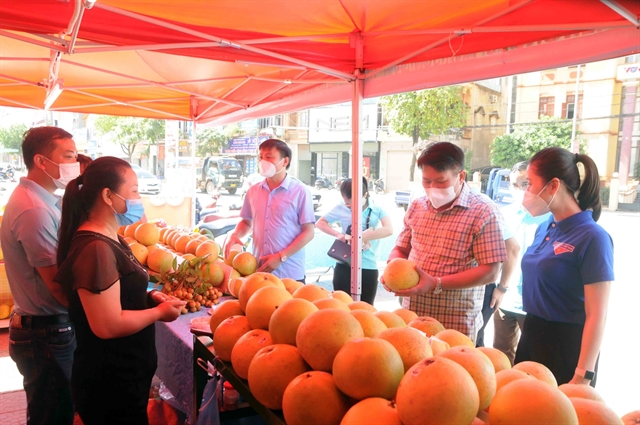 Opinion
Opinion


|
| OCOP products were showcased at a trade fair in northern Lạng Sơn Province. — VNA/VNS Photo |
Head of the Central Coordination Office for New-style Rural Building Nguyễn Minh Tiến spoke to Quân đội Nhân dân (People’s Army) online newspaper about measures to improve the efficiency of the “One Commune, One Product (OCOP)” programme.
How do you assess the results of the OCOP Programme over the past two years and what are the plans for the future?
The programme was implemented in a short period from 2018 to 2020 but has achieved positive results, exceeding set targets. There are now 4,469 products ranked from three stars. Most localities focus on developing their products.
We will support localities to develop new products basing on the advantages of their material zones and traditional occupations. Vocational training has been carried out for rural people to ensure at least 25-30 per cent of their workforce can participate in the OCOP programme.
We also aim to restore and promote the development of traditional craft villages, build material zones, improve capacity for businesses who join the programme, and strive to have 10,000 products to be rated three to five stars.
How has the COVID-19 pandemic affected the implementation of the OCOP programme?
Việt Nam as well as the whole world has been seriously affected by the COVID-19 pandemic. As a result, the consumption of OCOP products has also been affected due to disruption in supply chains.
However, the consumption of OCOP products still recorded a higher growth rate than other commercial products. Most businesses and supermarkets said consumption of OCOP products increased between 14-18 per cent.
But some OCOP products still face difficulties in the linkage process between production and consumption. Therefore, more attention should be paid to promoting the linkage, particularly the linkage between the production chain and the supermarket system.
We are also speeding up the consumption of OCOP products via e-commerce floors on the basis of the application of digital foundation. Many OCOP products that are rated four stars have been traded online in the context when Việt Nam and other countries still live with COVID-19.
We will not only focus on trade promotion but also support producers to sell their products online and connect with e-commerce floors and enhancing digital transformation to increase consumption of OCOP products.
Will these difficulties hinder the development of OCOP products?
During the 2018-2020 period, we just focused on improving existing products and their designs but still could not develop many new products. Some localities have the same products and lack creativeness to create products with added values.
Controlling and ensuring the quality of OCOP products also need improvement. Via assessment and classification, ministries and agencies found shortcomings and limitations of producers in improving their product quality to meet the increasingly strict requirements of the market. Many producers have yet paid attention to connecting material zones, registering geographical indications and trademark as well as intellectual property rights.
Apart from difficulties relating to the consumption of OCOP products, there is a lack of firm connection with the market because many small-scale producers do not understand the market, market segments, geographical indications, as well as intellectual property right registration, which could lead to trade disputes. There were cases in which some Vietnamese products gained a reputation in the domestic and global market but still can be counterfeited.
I think in the future, it is necessary to increase examination and inspection to help producers keep their products and support them to improve quality and develop new products.
Local products should pay more attention to registering geographical indications and intellectual property rights.
Which measures and mechanisms will we need during the next five years to help tackle difficulties to promote the development of the OCOP programme?
During the 2021-2025 period, we will have mechanisms and policies to support producers participating in the programme, focusing on improving their capacity, vocational training for rural workers, registering geographical indications, trademark, intellectual property rights and connect them with markets.
We will also focus on measures to increase digital transformation to control OCOP product quality and support producers to develop new products. — VNS




